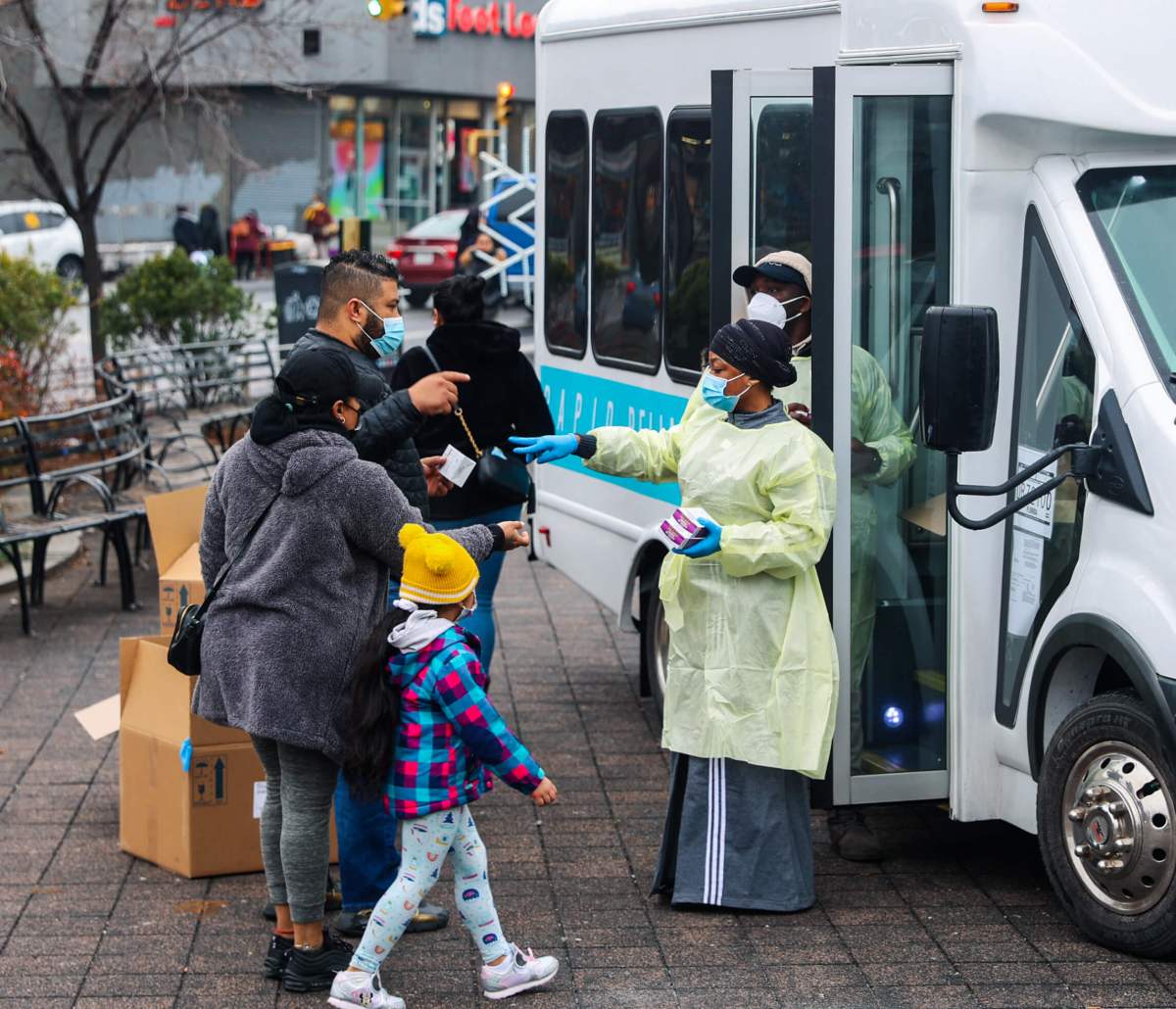BY ANGÉLICA ACEVEDO
Esther Lauren, a registered nurse and Queens resident, went from caring for COVID-19 patients to offering care for individuals who may be in need during the Black Lives Matter protests happening in Queens and elsewhere in New York City.
Initially, Lauren wanted to support the movement by donating and spreading awareness, as she’s been working non-stop for months assisting COVID-19 patients. The protests — demanding justice and accountability from police as well as an end to the systemic racism that has let police brutality persist — were sparked after Minneapolis Black man, George Floyd, was killed by white Police Officer Derek Chauvin, who pressed his knee on Floyd’s neck for almost nine minutes after he was already arrested and on the ground.
But as Lauren continued watching the news and social media posts, she changed her mind.
“It doesn’t make sense, when you’re someone who is always working with your hands, [to] just sit at home,” Lauren said. “My best skill set are my hands and nursing people back to health. That’s literally what I do for a living. So I said, ‘you know what, I’m going to get involved, and just help in that aspect, use the resources that I have and the knowledge that I have to do that.’”
The 25-year-old carries medical supplies with her to take care of wounds, as she says it’s important to minimize bleeding in the first 30 minutes of an open wound, and help with hydration (water bottles, granola bars and Vitamin C packets).
Lauren said that while it’s important to wear masks and gloves, having healthy meals and taking vitamins before protesting should also be a priority, being that we’re still in a pandemic.
“You want to prevent yourself from ending up in the hospital,” she said, noting that the warmer weather may cause some people to lose balance or pass out if they’re not properly hydrated.
She added that trying to maintain at least some distance between each other while protesting may help as well, even though it might be difficult in instances where the protest is at a standstill.
While some people worry the protests will spread the virus, Lauren’s experience as an essential worker — which involves taking crowded public transportation and not working from home like many others have during New York state’s stay-at-home order — puts her in a different position.
“I’ve done my part in terms of staying away from my friends, I have stayed away from large groups up until [now],” she said, adding that she mostly fears for her mother, who’s also a nurse. “It’s not that you’re not afraid, but you just can’t live like that because, at the end of the day, I still have to get up and go to work and do what I need to do.”
Data reveals that Black people, who are most of the people organizing and protesting, are not only contracting COVID-19 at higher rates than the rest of the population, but are also dying from the disease at higher rates than the rest of the population, in New York and the whole nation.
Knowing this, they’re still risking their lives not only because of what happened to Floyd, but because of the police brutality that took the lives of Louiseville’s Breonna Taylor and David McAtee, Georgia’s Ahmaud Arbery, and countless other Black people in recent years. What’s worse, the systemic racism in the United States’ justice system has repeatedly allowed this to happen, with little to no action taken to hold police accountable — even after there’s public outcry.
In New York, Lauren sees this moment as a “collection of frustrations.”
“There was already a disparity going on with the actual virus,” Lauren said. “New Yorkers have been inside for two months. A lot of people are not collecting unemployment, they’ve applied and they’re not able to actually physically get it. And they’re losing loved ones. They don’t know when they’re going back to work. And now they have to deal with police brutality.”
Lauren’s first time participating and aiding in the current Black Lives Matter protests was at the Jamaica demonstration and later the Brooklyn marches that lead to the Manhattan Bridge on Sunday, May 31.
The Jamaica protest made headlines as police officers from the 103rd Precinct took a knee with protesters, a moment Lauren captured and was later used on the front cover of the New York Daily News. But as more of these moments happen across the country — in the same day as police are seen shoving, pepper spraying, pointing a gun at protesters or almost running over them with their cars — people can’t help but question the sincerity of their actions.
“There’s so much messages coming out right now, and I think things can kind of get skewed,” Lauren said. “I do think it’s important for things to be documented, recorded, and photographed, but anyone who is choosing to only see that they’ve kneeled … Well, there’s plenty of videos showing you other sides of the story. So remaining educated and remaining up to date is very important.”
Lauren feels compelled to help so that protesters can avoid going to hospitals or medical centers — in which Black people are disproportionately disadvantaged — if it comes down to it.
“I think specifically for me, I’m not in a place to tell anyone how to protest or how to take out their frustrations, I’m just here to to help them medically,” she said. “I think people should be finding their role and knowing how to play it very well. I knew that I am a nurse, and my role is to be a nurse at all times. Everyone should just be figuring out what role they want to play in this and how they can play it very well. Not everyone has to go out on the field, but everyone has to play a role in some way.”
This story first appeared on qns.com.


































